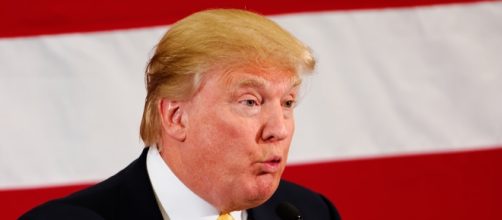America was home to over 700 Confederate statues and monuments on public government property as of 2016. The existence of these Confederate symbols - such as statues of Confederate leaders and the Confederate flag - have been the cause of much controversy because of their racial and pro-segregation ties. Due to this, many of these symbols have been taken down, but not without a fight.
Those who support the presence of Confederate symbols never fail to express their discontent at their removal. They claim these symbols are important historical artifacts and that under no circumstances symbolize hate.
They make these claims despite the Confederacy being an enemy combatant to the United States to preserve slavery. The immense differences in opinions held by both groups have recently resulted in outbursts of violence over the removal of Confederate symbols in Columbia, Sc., New Orleans, La., St. Louis, Mo., and Charlottesville, Va.
The continued reoccurrence of violence has put Confederate symbols at the forefront of attention across the nation. Being in the center of attention has resulted in a stronger push to permanently remove the monuments and symbols from government property.
Columbia, South Carolina
In July 2015, with the approval of then-governor Nikki Haley, South Carolina removed the Confederate flag that flew in Columbia on the State Capital grounds.
While the actual removal of the flag resulted in a cheering crowd, two years later - on July 10, 2017 - South Carolina Secessionist Party members raised the flag on public property once more. They promised to continue to do so on July 10 of every year. Violence broke out between protesters and at least fifty supporters of the Confederate flag.
New Orleans, Louisiana
After a 2015 City Council vote, proposed by Mayor Mitch Landrieu, the city of New Orleans removed four Confederate monuments, despite the numerous lawsuits filed against the city to preserve them. The removal of the last one left standing occurred on May 19, 2017, in the center of what was commonly referred to as Lee Circle: given the monument was a statue of Robert E.
Lee. Again, the removal was met by a cheering crowd. However, city officials confirmed they endured threats, violence, and intimidation while dismantling the statue. Invariably, supporters of the monuments brawled with protesters.
St. Louis, Missouri
On June 26, 2017, a monument of a Confederate soldier departing for the Civil War, leaving his family behind while a guardian angel hovered above them was removed from a St. Louis Park: Forest Park. The monument had been vandalized with phrases such as "End Racism" and "Black Lives Matter" after the 2014 murder of Michael Brown, a black teenager killed by police near Ferguson, Mo. While they were no reports of violence, a protest went on for weeks leading up to the monument's removal.
Charlottesville, Virginia
A white nationalists' rally, "Unite the Right" turned violent and deadly on Aug. 12, in a college town of Charlottesville, Va. The rally was organized to protest the removal of a statue of General Robert E. Lee from the recently renamed Emancipation Park. Police ordered the crowd to disperse, calling the gathering an unlawful assembly and both the city and the county declared a local state of emergency. Despite these efforts, the rally resulted in the death of Heather Heyer and dozens of other injuries.
POTUS comments on violence in Charlottesville
Apart from continuously repeating that his excuse for his delayed response to the outburst of violence was to ensure he had all the factual and correct information and insisting that both sides of the conflict were to blame, President Trump had very little of any substance to say.
It wasn't until Aug. 14 that the POTUS even acknowledged racism and hate groups who use violence as evil. However, he then went on to blame both sides of protesters again for the acts of violence that occurred. Trump also commented that there were "good people" in both groups. According to him, both sides were to blame for the incident as both sides had some "very bad people" and both had some "very good people."
'Both sides'
During his remarks, when President Trump refers to "both sides" he is talking about the "alt-right" and the so-called "alt-left." Both phrases have become common terminology on the far-right and understanding what they mean has become essential to understanding politics under the administration of Trump.
While the "alt-right" is a self-professed movement, experts who study American Extremists groups deny the existence of an "alt-left."
The 'alt-right'
The term "alt-right" stands for a far-right movement known to be racist and based on a white nationalist ideology. Most news organizations avoid using the term and seem to prefer referring to the "alt-right" as "white nationalism" and the "far-right" instead. To call the "alt-right" an extremist hate group would be putting it mildly. They stand for anti-Semitism, anti-feminism, anti-immigration, anti-LGBTQ, and hope to create a white state and destroy liberalism. A leader of the movement, Richard B. Spencer, confirms the "alt-right" is "identity politics for white people." While the movement isn't particularly organized, it has a large online presence.
The 'alt-left'
The existence of an "alt-left" is denied by many researchers of American extremists groups. They consider the term to be made up by the right to create some kind of balance with the far-right. This equivalence, however, is false. The "alt-left" is simply a made-up word meant to be offensive, abusive, and insulting to anything the left represents that the right doesn't like. It should be noted that people on the right aren't the only ones using the term: some centrist liberals use the term as well.
President Trumps' Response
Considering the fact that there's no actual alt-left network, group, or movement, Trumps' remarks make very little sense. It makes you wonder: who was Trump really referring to when he said the "alt-left?" In addition, what were the POTUS' motives and target audience in blaming both the "alt-right" and the "alt-left?"


